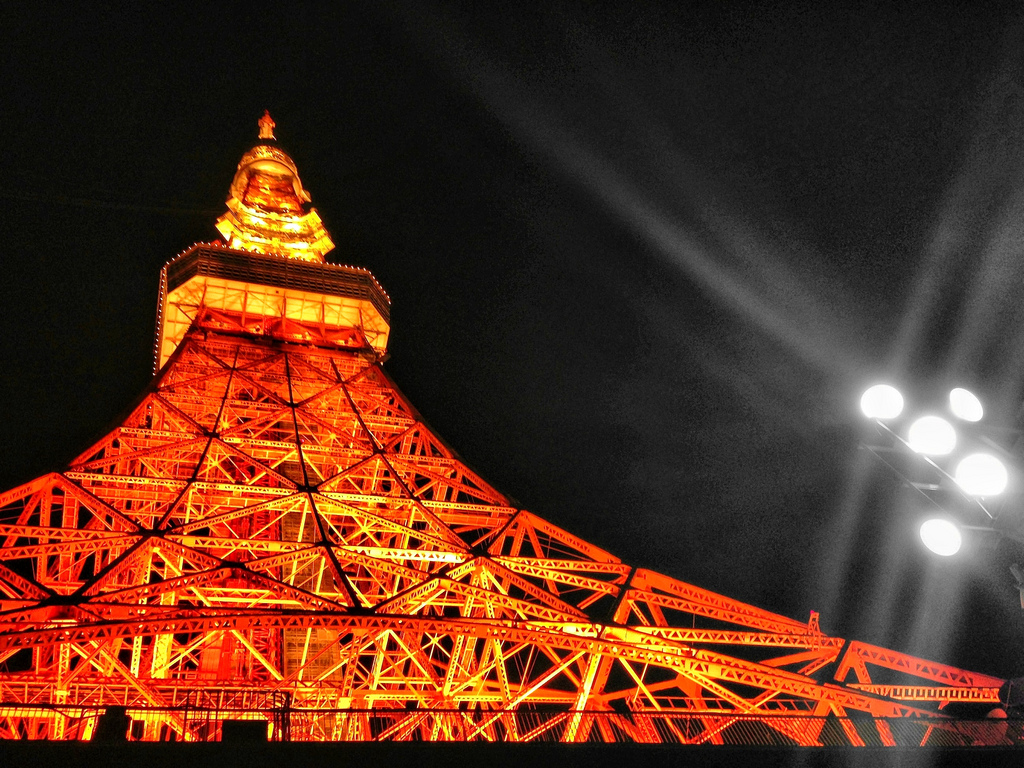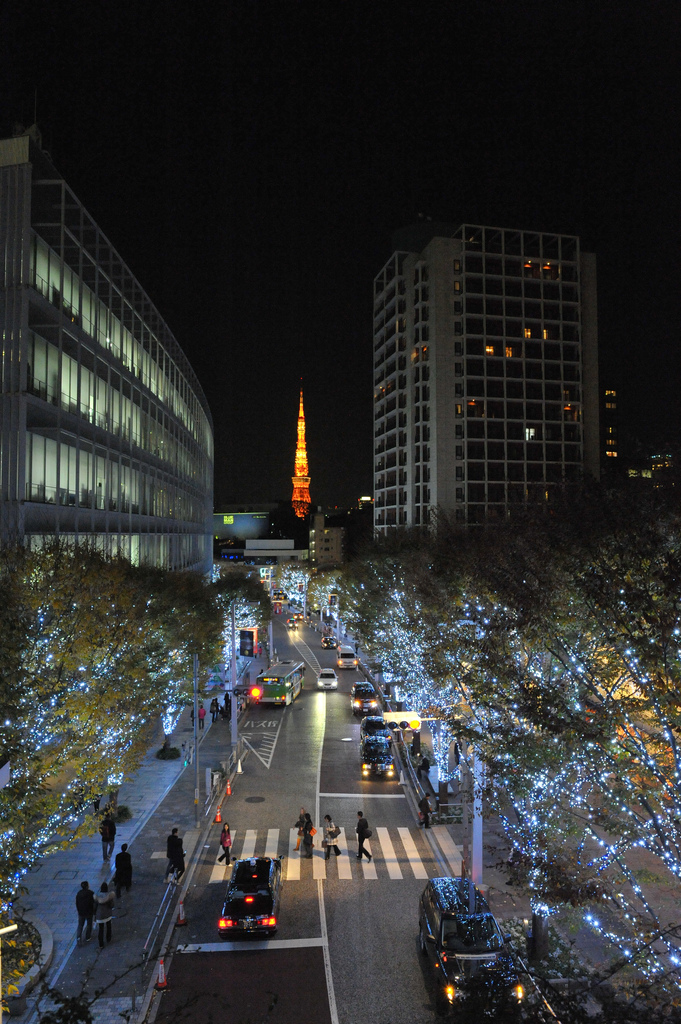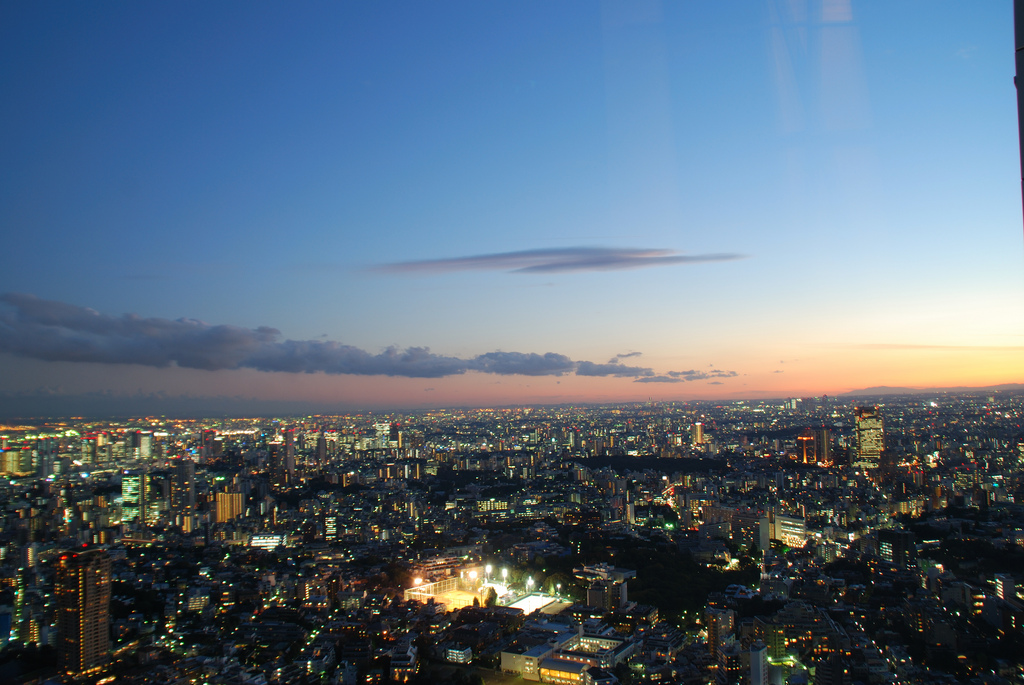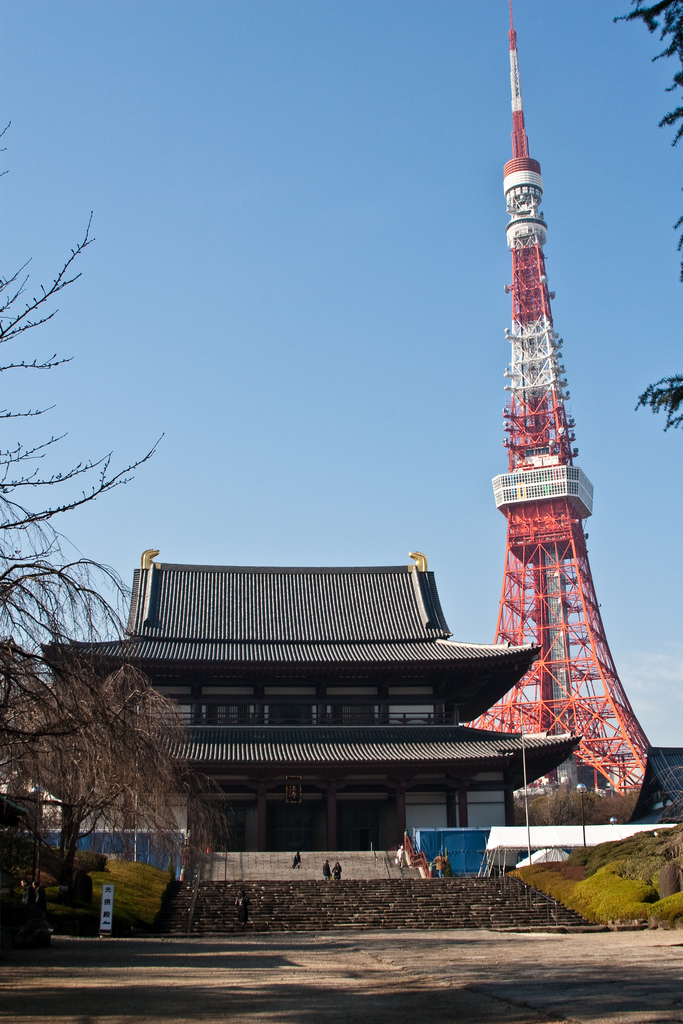The Tokyo Tower has fallen a minimum of 3 times to cinematic conquerors. Godzilla, Mothra, and King Kong have all dispatched it; yet there it still stands in Shiba Park at three hundred and thirty-three meters tall, a monument to post-World War II Japan’s financial prowness.

Tokyo Tower at night
Modelled on, and about 9 meters taller than, Paris’ Eiffel Tower, the orange and white Tokyo Tower was designed to serve as an antenna for 9 television and five FM radio stations. However its real value to Tokyo, considering that its opening in 1958, has actually been as a traveler destination.
Tokyo Tower Attractions
There are two observation decks at the Tokyo Tower, one at 150 meters and one at 250 meters. They have different entrance fees. In the evening, there may be live music in the restaurant in the main observatory. Both have stunning panoramic views of the city, with interactive boards labeling points of interest and showing the view at different times of day. During the day, there are good views of Tokyo Bay and the whole metropolitan area. In very clear weather, you can even see Mt. Fuji. At night it is like you are on a sea of lights twinkling below. The Odaiba Ferris Wheel is fun to pick out, and the dark outline of the Imperial Palace is a stark contrast to the bustling city.

Tokyo Tower from Roppongi Hills
The Tokyo Tower is the home of other different admission destinations, consisting of the first floor fish tank with over fifty thousand extremely small fish, and the 3rd floor’s Wax Works Museum and holographic Mysterious Walking Zone. The final, and maybe most entertaining, tourist attraction is the fourth floor’s Trick Art Gallery with its curious three-dimensional images.

Tokyo at night
Foot City, a shopping center with some amusement park attractions, is located at the base of the Tokyo Tower. You must pass through the area when leaving the observation decks. However, there are also barrier-free toilets and a nursing room in Foot City.
Among the interesting things about the Tokyo Tower’s area is that it towers above the 14th century Zojoji Temple, which was relocated to its present place in 1598. The Zojoji Temple is one of Tokyo’s significant temples, and was the household temple of the Tokugawa shogunate which ruled Japan from the Edo Period to the Meiji period. The juxtaposition of the two structures offers a perfect bridge between the old and the new Tokyo.

Zojoji Temple with Tokyo Tower in background
The Tokyo Tower website has videos, entrance fees, and access information: http://www.tokyotower.co.jp/english/
Getting there: The Tokyo Tower is between several different subway stations and can be reached but both Tokyo Metro and Toei Subway lines. The closest station is Akabanebashi Station on the Metro Oedo line. Use the Akebanebashi Exit. It is about a 5 minute walk to the tower.